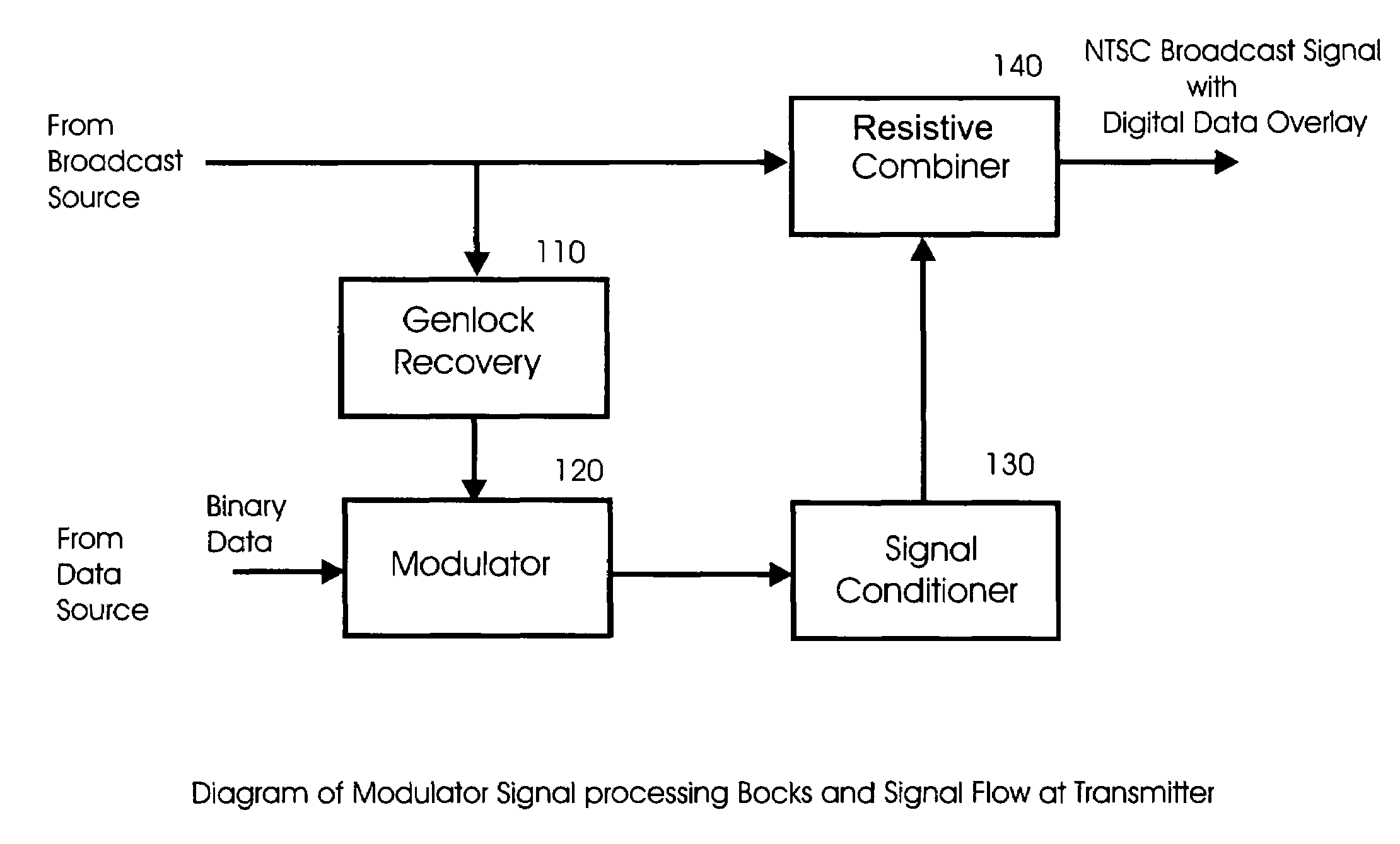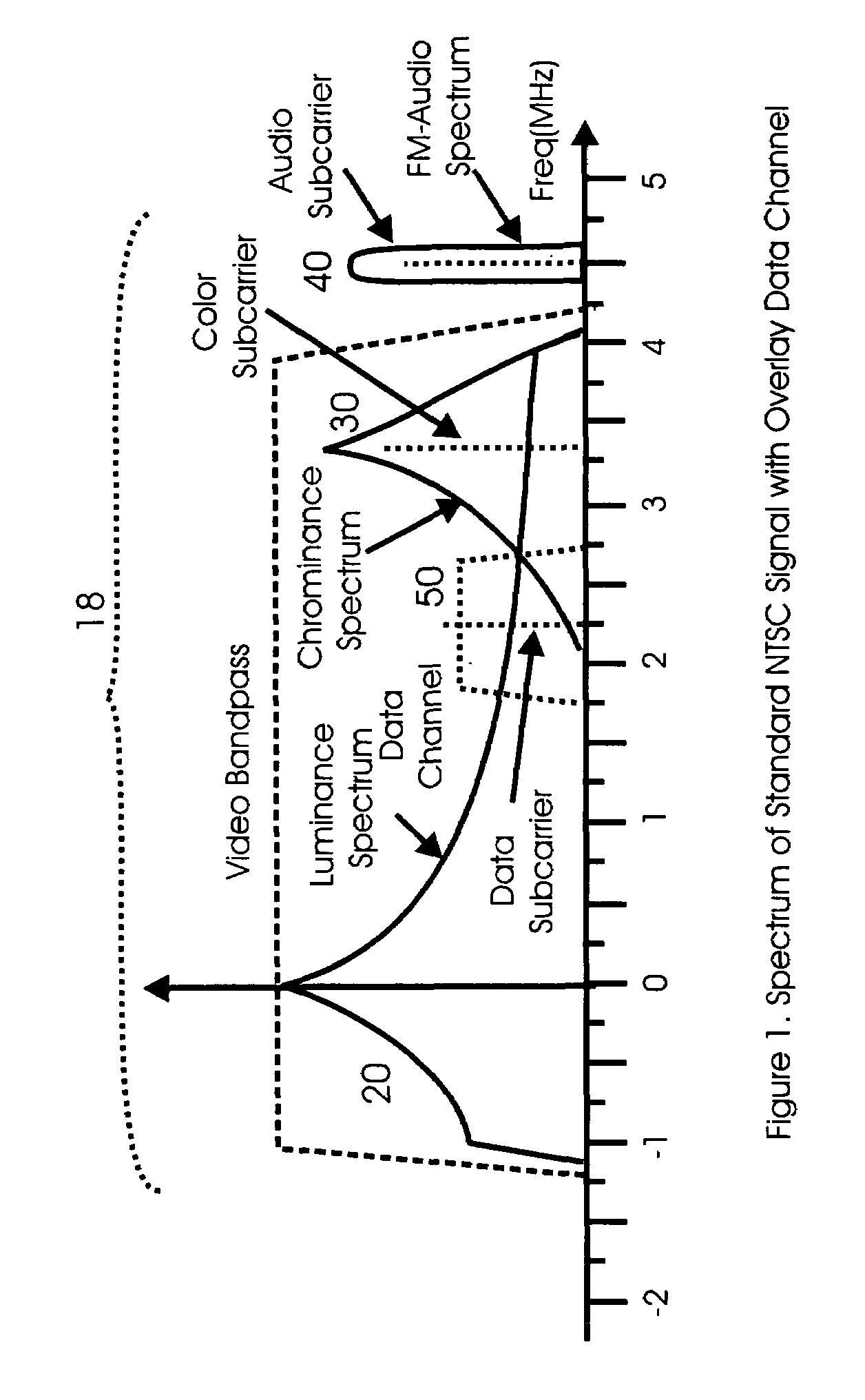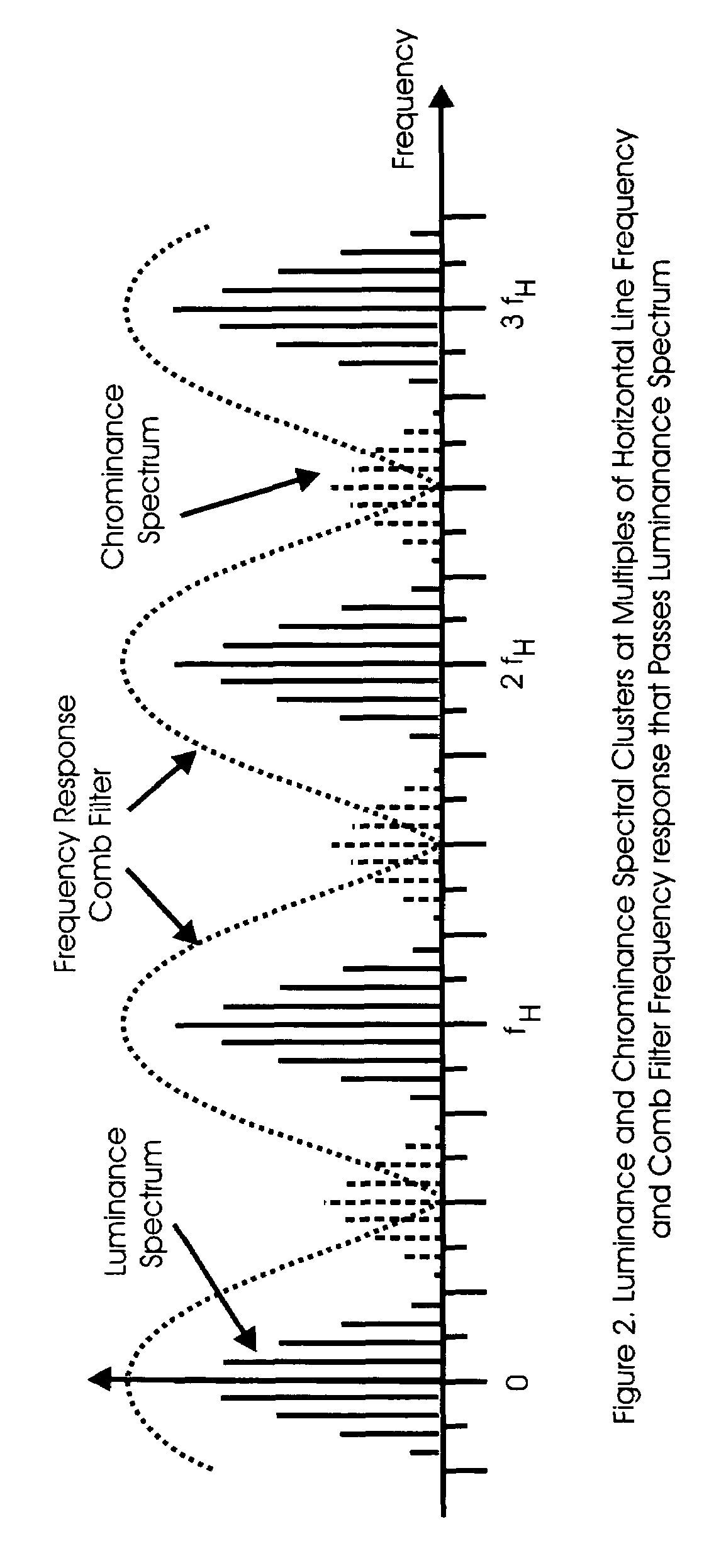System and method for nondisruptively embedding an OFDM modulated data signal into a composite video signal
- Summary
- Abstract
- Description
- Claims
- Application Information
AI Technical Summary
Benefits of technology
Problems solved by technology
Method used
Image
Examples
Embodiment Construction
[0039]FIG. 1 shows the frequency spectrum of an NTSC signal 18 that includes a luminance signal 20, a chrominance signal 30, an audio signal 40, and a data channel 50. The luminance signal 20 is the component of the NTSC signal 18 that is the picture component of black and white television. The luminance signal exhibits a 1 / f spectrum centered on the selected channel center frequency. The spectrum of the luminance signal is suppressed below the channel center frequency by a vestigal sideband filter so that the luminance signal is delivered as a vestigal sideband (VSB) signal. The chrominance signal 30 is centered at 3.58 MHz and exhibits a 1 / f spectral envelope . The chrominance signal 30 is band filtered to a 1.5 MHz bandwidth. Finally, the audio signal 40 is a frequency -modulated signal centered at 4.2 MHz over the assigned channel center frequency with a nominal bandwidth of 50 kHz.
[0040]FIG. 1 also shows the proposed location of the data channel 50. The data channel 50 is place...
PUM
 Login to View More
Login to View More Abstract
Description
Claims
Application Information
 Login to View More
Login to View More - R&D
- Intellectual Property
- Life Sciences
- Materials
- Tech Scout
- Unparalleled Data Quality
- Higher Quality Content
- 60% Fewer Hallucinations
Browse by: Latest US Patents, China's latest patents, Technical Efficacy Thesaurus, Application Domain, Technology Topic, Popular Technical Reports.
© 2025 PatSnap. All rights reserved.Legal|Privacy policy|Modern Slavery Act Transparency Statement|Sitemap|About US| Contact US: help@patsnap.com



